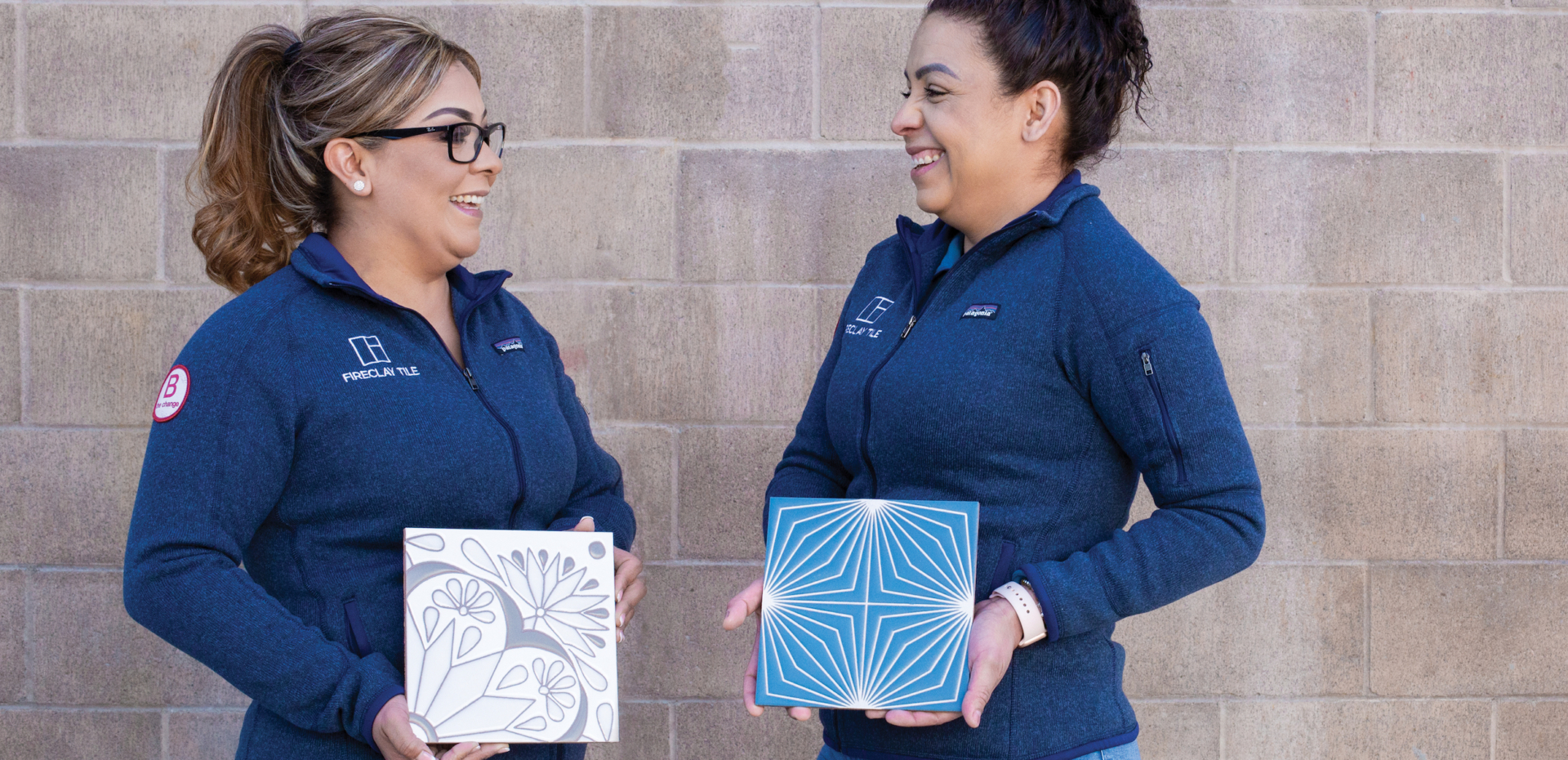Employee Ownership for Any Business Size: B Corps Chart a More Inclusive Path
May 4, 2022
How Employee Ownership Can Help Workers Build Wealth and Companies Build Their Bottom Lines
Business ownership structures that meaningfully bring workers into decision-making are lesser-known but potentially powerful tools for economic inclusion and resilience. Employee ownership can also play an important role in building wealth for People of Color, women, and others who have typically not had access to these opportunities. And a company doesn’t have to be big for it to be impactful.
Employee ownership also holds promise at a time when income inequality is hitting record levels and a generation of baby boomer business owners — many of them running small community-based companies — are moving toward retirement. Employee ownership structures vary — stock options or stock purchase plans, stock awards or performance shares, employee stock ownership plans, worker cooperatives, and employee ownership trusts — and some come with tax benefits. Different models work for companies of different sizes and organizational structures.
The B Impact Assessment used for B Corp Certification incorporates the potential positive impact of these ownership structures and offers resources for businesses looking to build inclusion. The Creating Inclusion Through Company Ownership Best Practices Guide notes that inclusive ownership can enhance business impact by addressing income equality, inclusion, empowerment, financial security, and improved workforce culture and satisfaction. It also holds promise for the bottom line, employee ownership can lead to improved employee performance, new market opportunities, diverse perspectives for decision-making, and alternative methods of raising capital.
The guide also outlines questions that company leaders should consider about the transition to worker ownership to maximize inclusion and impact:
- What employees should be eligible?
- When and how can employees be eligible (e.g. at a certain tenure)?
- How much of the company should be reserved for worker ownership?
- Should employees buy stocks or be able to participate without direct out-of-pocket costs?
Two B Corps that have incorporated employee ownership into their business structure provide real-world examples and lessons for other business leaders. Keep reading to learn more about the process and their experiences.

Subscribe to B The Change Weekly
Learn more about this growing movement of Certified B Corporations using business as a force for good, and sign up to receive the B The Change Weekly newsletter for more stories like this one, delivered straight to your inbox once a week.
An Employee Stock Option Plan to Grow the Business and Worker Wealth
At Fireclay Tile, employee ownership started small and has grown along with the company’s financial success. Founded in 1986, the eco-friendly handmade tile company began the process in 2013 when it introduced employee ownership to 100% of its 45 teammates through a stock option plan representing 10% of the company. In 2020, Fireclay completed a buyout of its Founder and increased teammate ownership to 30% of the company, which today totals 257 teammates.
“Our ownership is always fluid and changes with the needs of the business,” says CEO Eric Edelson, adding that the stock option plan is modeled after those typically used by tech startups. Edelson and outside investors own the remaining stock shares, which helps spur the company to pursue growth and build its capital.
Since introducing employee ownership, Fireclay revenue has increased by more than 12 times, and profitability and pay and benefits have similarly grown. “We’ve increased our starting wage by 70%, and our average wage by more than that,” Edelson says. “In the last year, we’ve grown our headcount by 65%. So we’re constantly attracting talent. We’ve definitely tried to create an owner mentality, and I think you see a lot of teammates who are very dedicated and passionate about Fireclay.”

Fireclay Clay creates handmade tiles that incorporate recycled materials that are locally sourced. (Photo courtesy Fireclay Tile)
While Edelson says it can be easy to talk about the benefits of working at Fireclay, the numbers — from the company’s B Impact Assessment score to its long-term worker retention rate to the fact that 80% of managers have been promoted from within — tell the story. “We have our struggles — any organization does — but I think generally Fireclay teammates have a really strong affinity for this place. We still have an opportunity to better educate people about their ownership,” he says. Last year that included giving everyone at Fireclay a total compensation statement that reflects how hitting financial targets and thresholds builds their ownership value and how their stake in the company can grow over time.
That education extends to other business owners, as Edelson hopes to encourage more companies to pursue employee ownership. It’s important to realize the process won’t be perfect and will be different for every business, he says. “Most business owners will say, ‘We’ll do it once we get to a certain size and scale, once we’re big enough.’ They’re nice words, but they’re not meaningful,” he says. “A lot of people will say it is very complicated, and I’ll say, ‘Yes, but so is running a business.’ You just have to start somewhere. That’s a common theme with B Corps — just try something, and sometimes it works. Sometimes it may take longer than you thought.”
But as Edelson and others at Fireclay have learned and shown, building ownership among employees also can help drive business growth to new levels and encourage innovation and collaboration among workers.
“If you really want to be a true stakeholder and use business as a force for good, employee ownership is an important part. It’s a long-term strategy driven by alignment between stakeholders — myself, investors, the previous founder, employees — all here together. If I have success, they have success and vice versa.”

The Future of Work Is Now
The community of Certified B Corporations knows that profits don’t have to come at the expense of other stakeholders. Learn more in this downloadable report.
Employee Ownership Builds Connections Among Workers, Clients, and Community
Ingage Partners was founded as a B Corp in 2011, and in 2018 became an employee-owned company that operates under an Employee Ownership Stock Plan (ESOP) where about 75 of its workers earn their shares as a retirement benefit. The Cincinnati, Ohio-based consulting company supports technology innovators by designing, building, and delivering software solutions.
In making the shift to an ESOP, Ingage Partners Co-Founder and CEO Michael Kroeger says the company wanted to emphasize collective interest by sharing profits and fostering an inclusive community with its employees and their families — a feeling that carries over to clients and the community.
“For our clients, this means our employees are invested in the success of every project we take on. This shared sense of responsibility creates a culture where we make decisions every day as we would approach our personal or family decisions,” Kroeger says. “Not only does it motivate our employees, every decision — financial, technical, logistical — is viewed through the lens of shared ownership in the company and the collective interest of employee-owners.”

In 2020, workers at Ingage Partners served more than 3,600 hours in the community as part of the company’s commitment to stakeholders. (Photo courtesy Ingage Partners)
Because Ingage Partners was founded as a B Corp, with a mission to do business differently, the company has considered workers as business stakeholders since its start. “We’re always in pursuit of doing business better, and employee ownership is another way we live out our values,” Kroeger says.
As with B Corp Certification, the process to become employee owned involves new challenges and complexity and requires a commitment to extra work. “No longer are you making decisions as a leader that impact your personal financials — all decisions now affect everyone’s financials,” he says. “So every decision can be viewed through the lens of other employees: Will they think they need to get out while [the] share price is high and feed the short-term mentality our culture promotes, or will they stay in it for the long haul to build something amazing?”
Learn more about B Corps and employee ownership:
Sign Up for our B The Change Newsletter
Read stories on the B Corp Movement and people using business as a force for good. The B The Change Newsletter is sent weekly.




